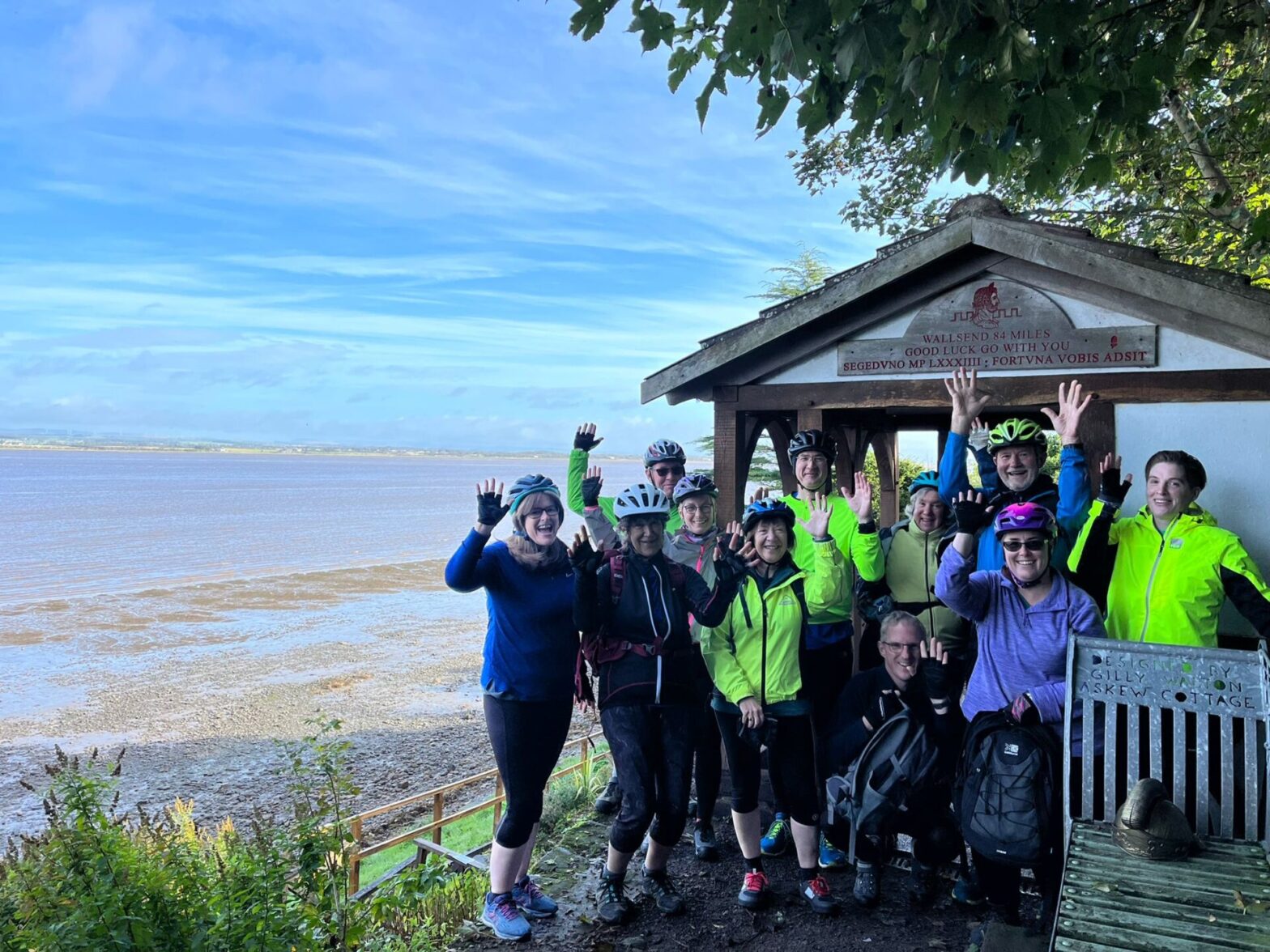Hadrian’s Cycleway travelogue
Here are a few reflections having taken a cycling holiday in the UK, exploring Hadrian’s Wall and achieving a coast-to-coast cycle with Explore!
This was my first ‘package holiday’ with strangers. I arrived to find that I was one of a group of 11, three couples and five single travellers, or should I say cyclists, all assisted by two very friendly and attentive guides (one official guide and one bike support, in fact a lovely couple, Ceri and James who were experienced outdoor activity guides).
We met at Whitley Bay on the east coast, and had a great introductory fish and chip supper, before a two-hour transfer by mini bus to the west coast the next morning, to cycle back to the start. Arriving at the small hamlet of Bowness on Solway, we had a lovely coffee in a café before being assigned bikes and ensuring that they fitted correctly, (as we do at the start of our tours if you’ve hired a bike through us). I was kitted out with a Forme Peak Trail 1, which, once I’d had the seat adjusted for comfort was a great ride, I’m not sure that I wasn’t cycling up hill easier than on my Trek 7.4 hybrid.
Day 1
28 miles, elevation: 1,177 foot
After a quick photocall at the official start of the Hadrian’s Wall walking and cycling route, we were off, having been charged not to rush, as the flat saltmarshes of the Solway Firth were not to be repeated anywhere else on the tour! We were also advised to ‘keep something in the tank’ for the end of the cycle, as there was a hill up towards Brampton, our first stay.
I stopped a couple of times, as I’d been cycling with binoculars hanging round my neck, to look at the bird life. There were egrets, curlews, and lapwings. A flock of around a thousand small white birds took flight; an enchanting view. I’m guessing they were sanderlings or another small wader. The route passed Burgh by Sands, where Edward I met his fate. Despite being ill, he had insisted on being taken to follow his troops over the Solway Firth.
We were following a GPS app which gave route prompts (once you’d worked out how it worked!), which made route finding easy, though we needed a bit of blind faith to reach the meet-up point in Carlisle. At one point, the shared pavement/cyclepath also ended with an on-road portion facing uphill on a blind brow- which was not great planning on the part of the local cycle-route planners! As cyclists we still needed to make some decisions! I opted to walk up the brow of the hill and then cross to the left-hand side of the road to continue cycling! We all cycled at our own pace, but in pondering whether I was on the correct route, some of the other cyclists caught up with me so I was grateful to join with them for a while.
Take a look at our day-length guided bike tours now!
On reaching the carpark in Carlisle, we could leave our bikes with Ceri and James, for a wander around the town, castle or cathedral
I opted to visit Carlisle castle. Other than an amazing wall of medieval graffiti carved by (they suspect) two bored soldiers, I found it a bit disappointing, (having grown up in real castle country!) The iconography in the graffiti displayed trades and allegiances and covered two walls of a small anteroom of the larger room at the top of the castle. It’s that direct link with people from centuries past which speaks to me.
The cycle from Carlisle took us through public parks and then quiet lanes once again, finally reaching a small hill, really no worse than some of the hills on Anglesey!
Through the whole cycling there was an easy camaraderie, and I felt quite relaxed either cycling with people or on my own, feeling no expectation from other cyclists, we all dropped in and out of groups as it suited our speeds and agendas. The first night’s stay was at a lovely welcoming large BnB, The Scotch Arms Mews, which I suspect was an old pub, and had a table booked at the Howard Arms in the village.



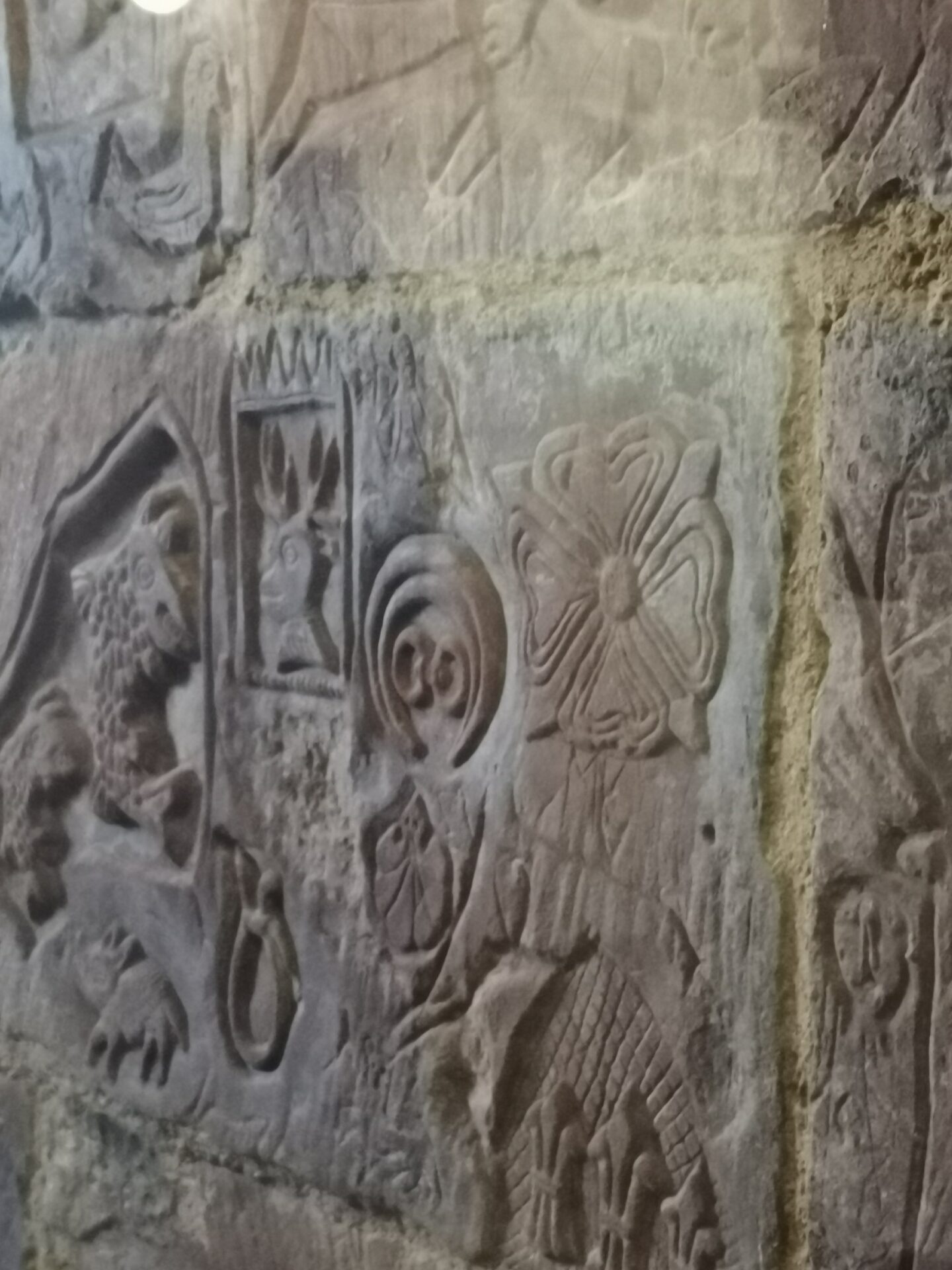
Day 2
Brampton to Haltwhistle was a short 14 miles and 1,003 foot, as we now enter Hadrian’s Wall and Roman Museum country!
Lanercost Priory
We had only a short cycle this morning before reaching Lanercost Priory, but I and others stopped to appreciate and photograph a fine bridge, which I now find out was built in 1724. We then arrived with a few minutes to spend before being able to visit Lanercost Priory (where Edward I has stayed while ill and where his body lay on its journey back to London). Founded in the 12th century, the building and the community there must have experienced some violent times before falling victim to Henry VIII’s Reformation. However, a large church remains within the old Priory nave. Beyond the altar, instead of stained glass, there’s a large clear glass paned window through which you can see the remains of the abbey apse beyond. One point of note was that the church itself was far more informative about the history of the Priory than was the English Heritage site, which does give access to the Abbey ruins!
Powered by coffee and a date slice, I headed off to catch up with the others, having spent more time here than most.
Reaching Hadrian’s Wall!
The next natural stop, where I caught up with some fellow cyclists, was Banks East, or Turret 52a, the footings of an observation tower along Hadrian’s Wall, and our first windswept encounter with the wall! These watch towers were placed every two Roman miles along the wall and would have been manned by a couple of Roman soldiers, garrisoned to defend the frontier.
It was breath-taking to think that we were on the furthest western frontier of an enormous empire stretching to the far east, before its ultimate collapse. We cycled along some wonderful open country to visit Birdoswald Roman Fort and the Roman Army Museum.
Birdoswald is an unusual ‘Roman fort’. Not being ‘over excavated’, it gives you an idea of how these places must have appeared to our predecessors down the ages. They may well have wondered at their purpose, and visited to find decent stones to re-use in their communities.
A few miles further on an increasingly windy but dry cycle, we reached the Roman Army Museum. A small museum run by the same Trust that runs Vindolanda, this was varied, with artefacts and hands-on opportunities, to pull on an archer’s bow and feel the weight of different types of armour, and a 3D film, which really brought the area to life! There’s a short taster here.
Reaching the centre of Britain!
Tonight’s stop was the Centre of Britain Hotel at Haltwhistle, so called as the town claims to be at Britain’s centre! Though a town with a mining and quarrying heritage, Haltwhistle’s name has nothing to do with any railway connection as one might imagine, but has emerged from early English ‘Haut Whysile’ or ‘high watch between two rivers’, another reference to this borderland of tumultuous warfare and raiding.
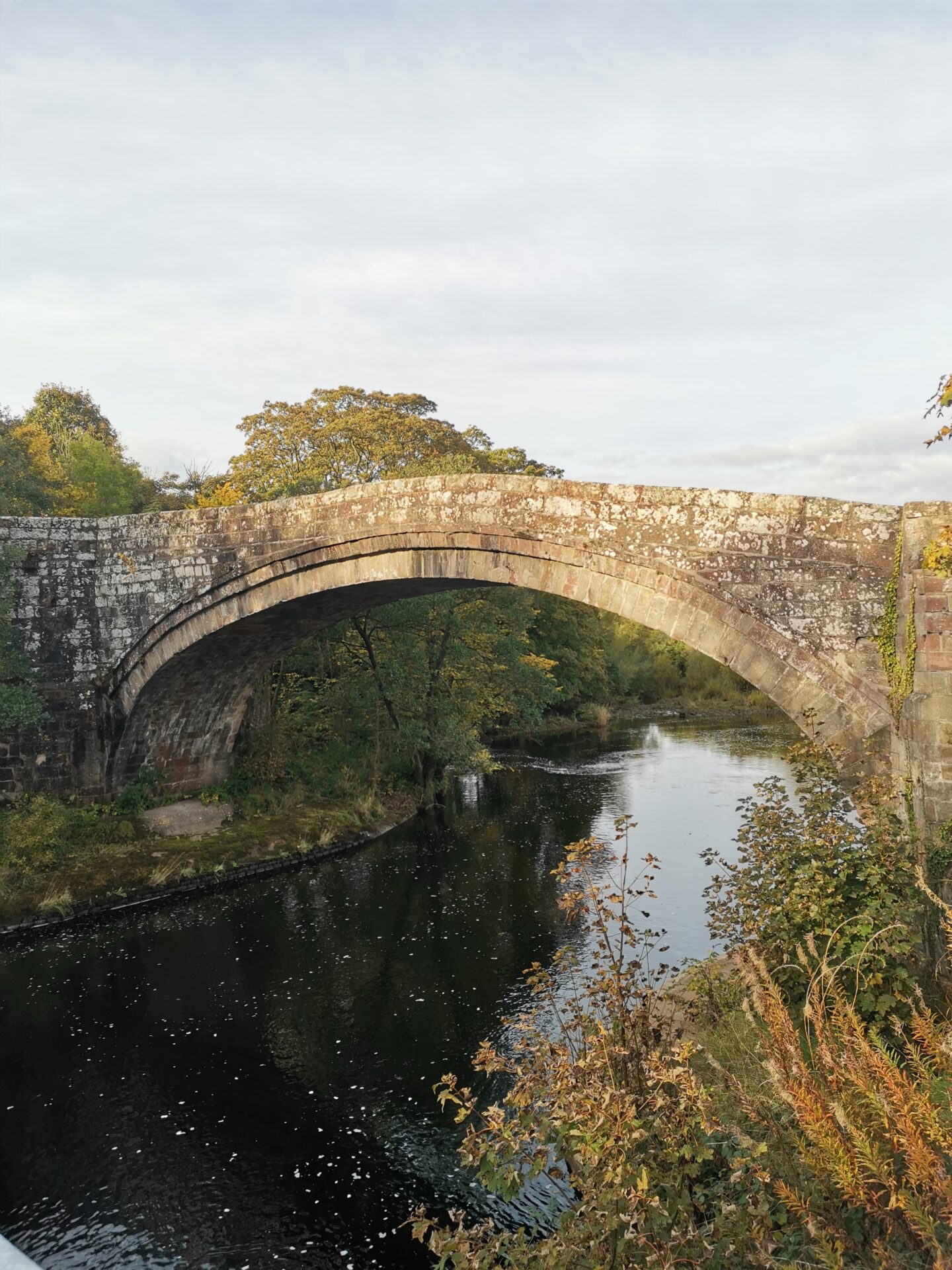


Day 3
22 miles 1,449 ft elevation
Leaving Haltwhistle, the route continued to take us along rural roads, though today’s route seemed to climb, only to lose height and then climb again! This feeling was perhaps exacerbated by culminative tiredness!
We’d formed quite a group before arriving at the Sill National Landscape Discovery Centre but here, some of the party chose to walk to Sycamore gap- a tree grows in a natural gap in the Great Whin Sill, a natural fault line and escarpment which the wall uses it to its advantage. The spot has become renowned due to its use as a location in the film, Robin Hood Prince of Thieves.
We know they called it Vindolanda!
I had cycled on, as the gap is visible from the road and Vindolanda was the highlight for me. I wanted as much time as possible to explore the site and museum. Though I almost cycled past the unassuming entrance area, the visit did not disappoint!
The site has parallels with Pompeii, in that much still remains to be excavated! One interesting point was to see areas being currently excavated, rather than the static, stabilised footings you see at more established sites. The ‘vincus’ or outer settlement is large, and its largest building in a prime location? A pub! The fort itself has had nine iterations on the current site!
Despite walking past hundreds of single Roman shoes of every size and style, (they’ve only found a few pairs!) the highlight of the Museum was the excellent displays and interpretations of the unique and fascinating ‘writing tablets’. These were akin to ‘post-cards’, and were discovered among the site rubbish dumps.
Imagine being the first person in almost two thousand years to read written messages from people who lived at the fort! The tablets have introduced us to hundreds of named individuals, and provided insights into many aspects of the daily life of the fort, both public and private. The main collection is safeguarded at the British Museum and has been described as one of the Museum’s most significant discoveries.
Leaving Vindolanda, I faced a short hill before turning left for a lovely upland road, and then the longest downhill ‘freewheel’ I’ve ever experienced!
I then cycled into Hexham for the ‘grandest’ stay of the trip in the Beaumont Hotel at Hexham, and enough time for a quick visit to Hexham Abbey.


Day 4
34.6 miles 1,222 ft elevation
The last day was fairly long, again following rural roads and an amazing length of offroad cycle / shared use path.
Cycling out of Hexham, our first stop was Corbridge, once the most northerly town in the Roman empire. I had visited some years ago, and while far smaller than Vindolanda, the museum (where staff kindly opened up for us early arrivals) had an interesting collection including a Roman ‘hoard’ which includes some armour. I appreciated a time-line of different elements running along the walls of the museum, illustrating information about the comings and goings of people, in parallel with when different goods, materials and cultural influences arrived in the region.
There were some interesting panels about some of the locals who helped excavate Corbridge over a century ago, possibly capitalising on an increased interest in archaeology following The Dig, the film about the Sutton Hoo excavation.
Completing the coast to coast!
There were no other museums scheduled for the day, other than cycling along the Wylam waggonway and passing George Stephenson’s house.
Ceri advised us that the many road crossings through Newcastle would take up some time, and having seen barely any traffic on the majority of the route, we were happy to use the pelican crossings to cross some of the major roads entering Newcastle, before reaching the riverside walk and shared path. It was almost a culture shock to cycle through a large town- at one point counting seven bridges across the Tyne! After a late lunch-stop at the Cycle Hub Bike Café, we cycled on to be greeted at our destination by Ceri. I think I arrived at Tyneside and within sight of its ruined abbey within 5 minutes of the suggested end time of 4.00pm!

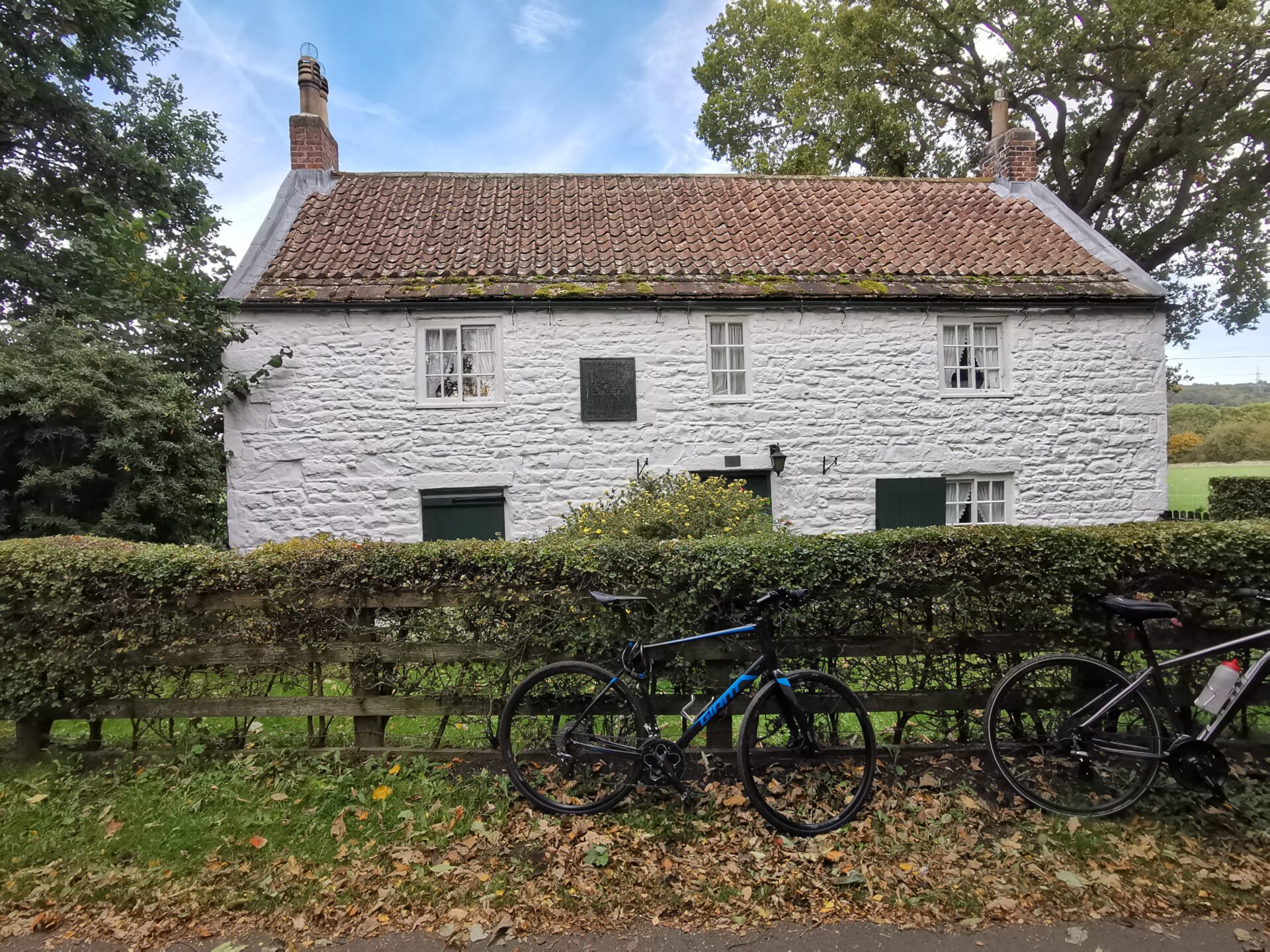
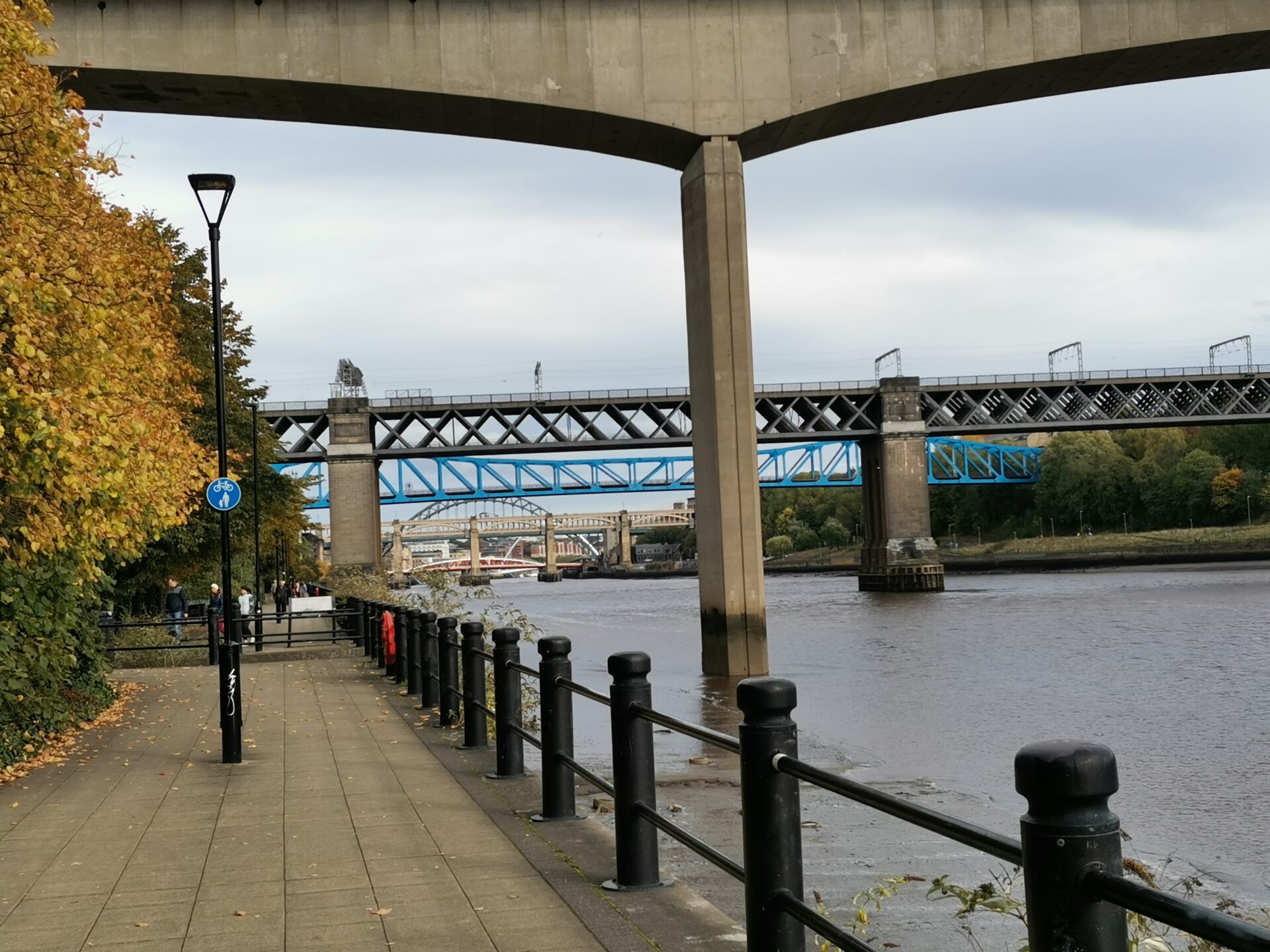
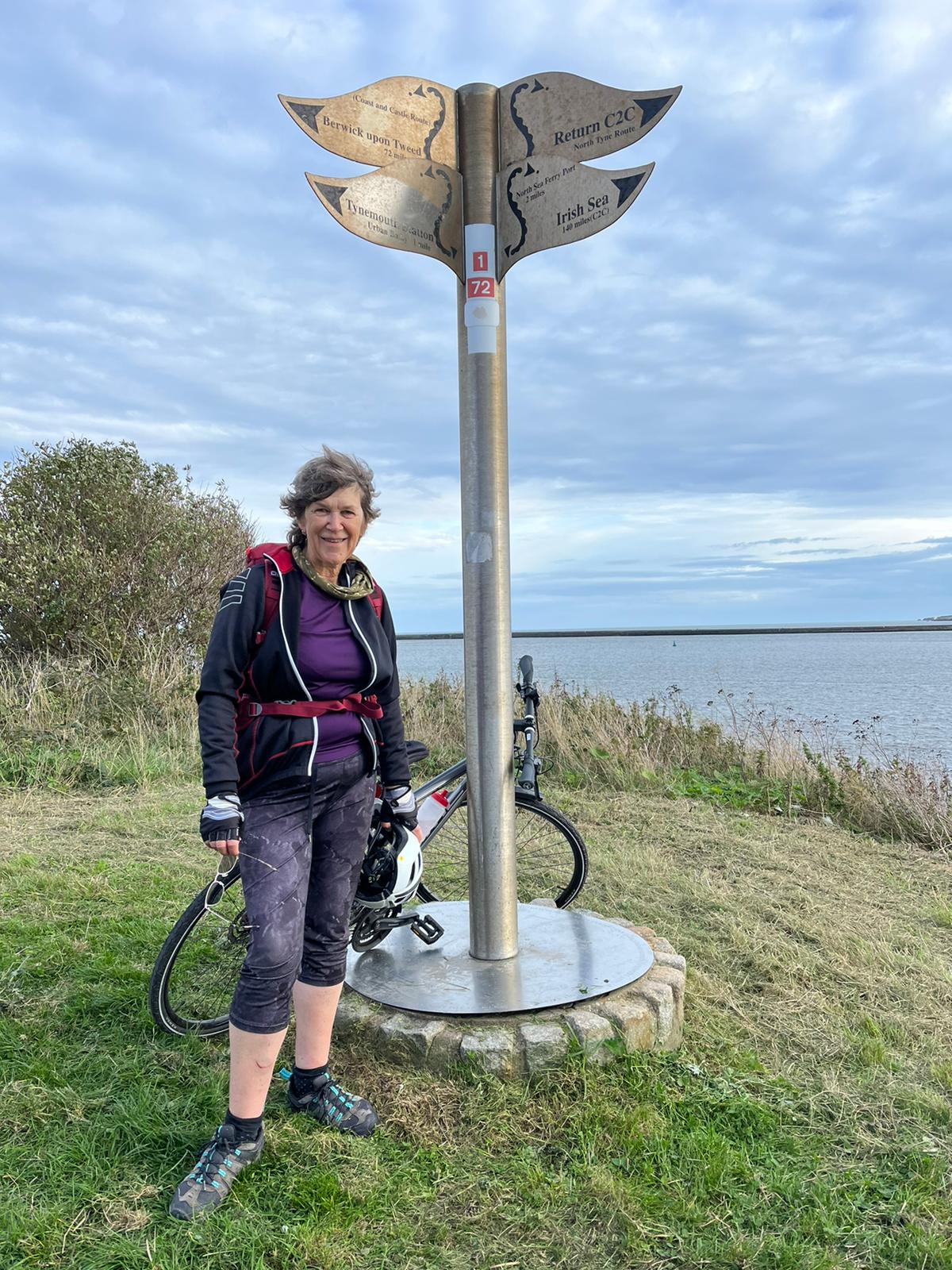
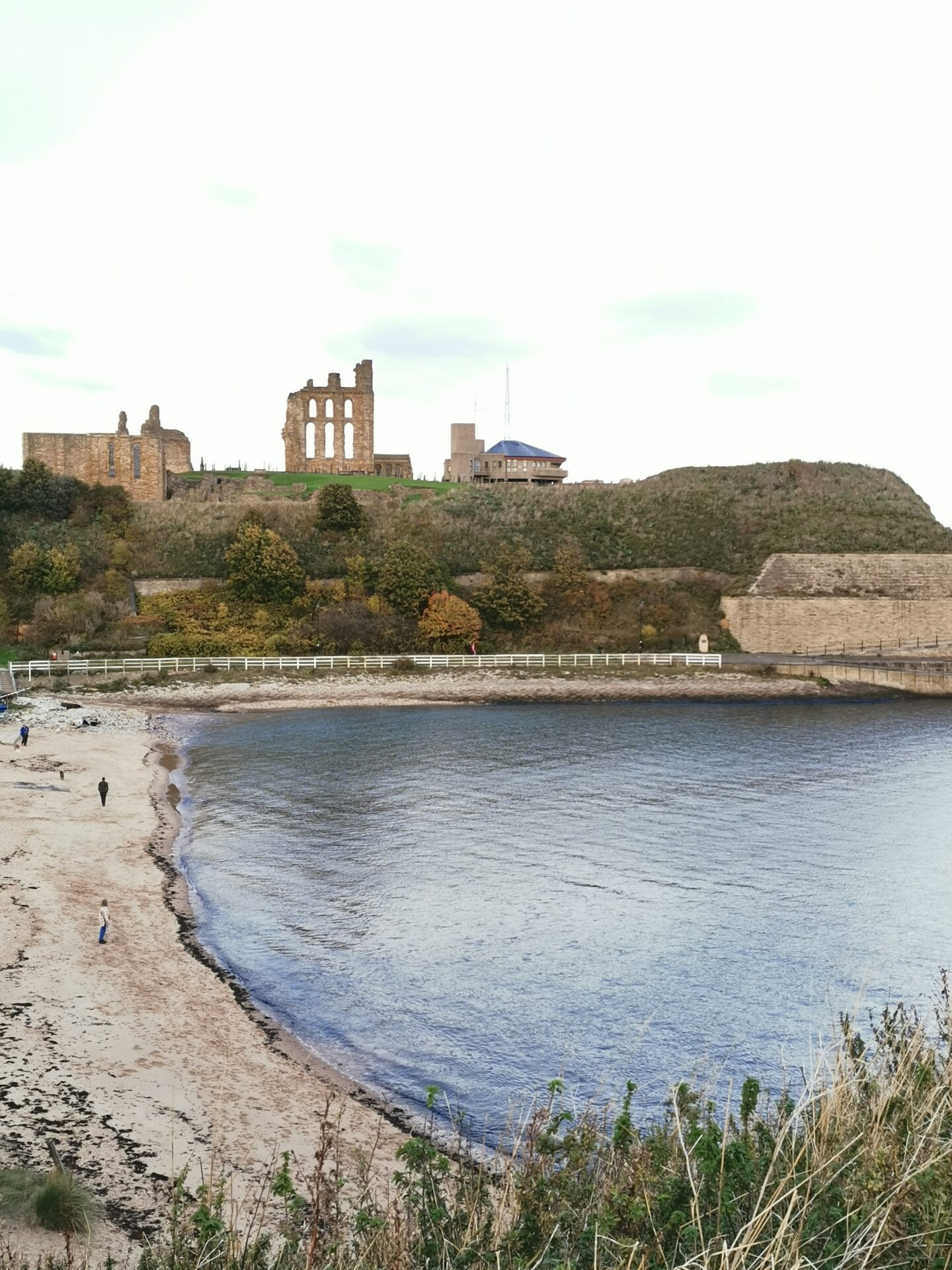
Reflections on Guided vs Self-guided Tours?
This type of holiday is a bit of a ‘hybrid’ in that it’s not just available to pick up and cycle on your own as a ‘self-guided’ tour would be. You are in a group, and should you need assistance, have a puncture or any other difficulty or emergency, and the guides are around to check in on as you pass, but you are not guided on the route.
I have been on another self-guided tour in Mallorca, where we just selected a date, picked up our bikes, enjoyed having our luggage transferred ahead each day, and could call on assistance in an emergency, but other than at beginning and end, we did not see or hear from our contact. Ceri and James provided a far closer level of support, my comment to them was that it was like having parents looking after you!
On a Guided Tours, even though ultimately, you are responsible for your safety, we do ride with you. At the start we share tips and advice about riding in a group and road positioning, in addition to warning about any hazards you may encounter en route. One of the comments we get is our attention to safety and the fact that our riders feel ‘looked after’.
I suppose this attention to hazards would be difficult over a 100 mile route. As we were not necessarily cycling as a group, it would be impossible to warn each of us as the hazards arose, and we would not remember the level of detail required. Parts of the surface of the cycle route between Newcastle and Tynemouth were literally alarming, but would have been difficult to warn people of in advance, as we would have found it impossible to identify the location until upon it! The only alternative might be to have added it as an ‘alarm’ on the navigation app, were such a thing possible.
On a personal note, I thoroughly enjoyed the holiday and am looking into spending long week-ends over the ‘quiet season’, following more longer distance routes- but probably carrying my own panniers, and booking some nice B&Bs along the way.
If you would like to spend a few days cycling on Anglesey, we usually put a discounted package of our routes together over the Easter week-end (Good Friday, Saturday, Easter Monday) and would be happy to discuss tailoring a few day’s cycling to suit your needs- just get in touch!
(Thanks to Mark Fielding and Ceri for permission to use some of their images )

